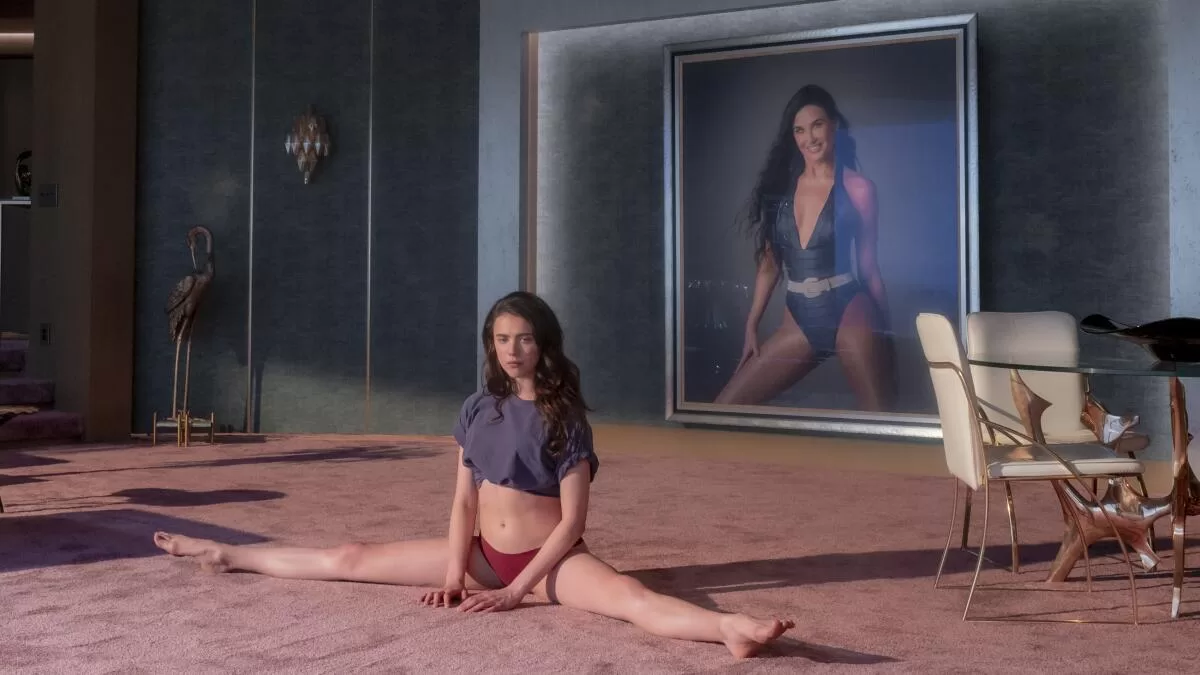Hello! I’m Mark Olsen. Welcome to another edition of your regular field guide to a world of Only Good Movies.
Both Coralie Fargeat’s “The Substance” and Aaron Schimberg’s “A Different Man,” two of the more highly praised films from this year’s festival circuit, are landing in theaters this weekend.
“The Substance” premiered at Cannes, where it picked up the screenplay prize for Fargeat, and also played at the recent Toronto International Film Festival. Demi Moore gives a searing performance as Elisabeth Sparkle, a TV fitness star who is being phased out by her sexist, ageist boss, played by Dennis Quaid. She comes across a mysterious cure which will allow a younger version of herself to emerge from her back, who comes to be known as Sue (Margaret Qualley) and takes over Elizabeth’s old job. The two selves are intended to essentially time-share who gets to be alive, switching off every week. But Sue becomes desperate not to give up her glamorous life, leading to disastrous consequences.
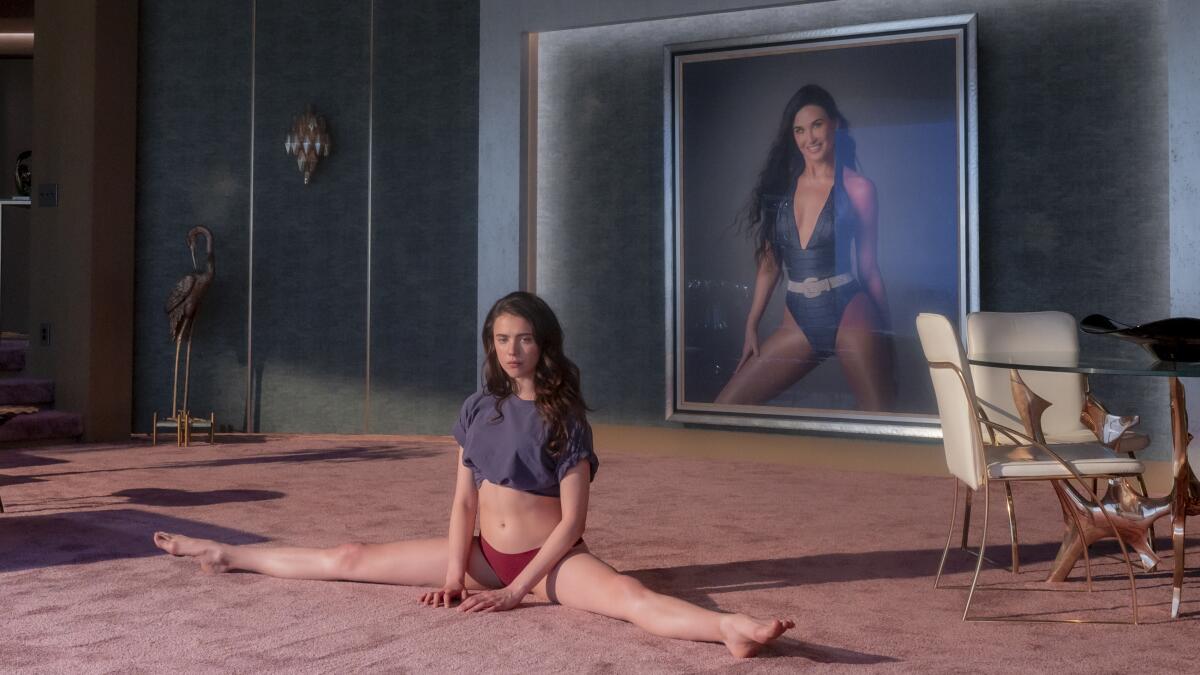
Margaret Qualley in the movie “The Substance.”
(Mubi)
Moore, Qualley and Fargeat all sat down together in London to talk with Emily Zemler about the film and how it tackles issues of aging and the expectations of image and beauty placed on women. Moore addressed the film’s disturbing body-horror prosthetics and how the story’s extremes pushed both actors: The finale required 30,000 gallons of blood sprayed from a firehouse.
“You have to walk away feeling that you put it all on the table,” Moore said. “It called for it and it’s what you want to bring to it.”
Schimberg’s “A Different Man” premiered earlier this year at the Sundance Film Festival. Sebastian Stan stars as Edward, a man with the genetic disorder neurofibromatosis that causes tumors to grow on his face. An experimental treatment leaves him looking like, well, Sebastian Stan, but he soon finds aspects of his life taken over by Oswald (Adam Pearson), an actor with the same condition who is playing Edward in a stage production based on his life.
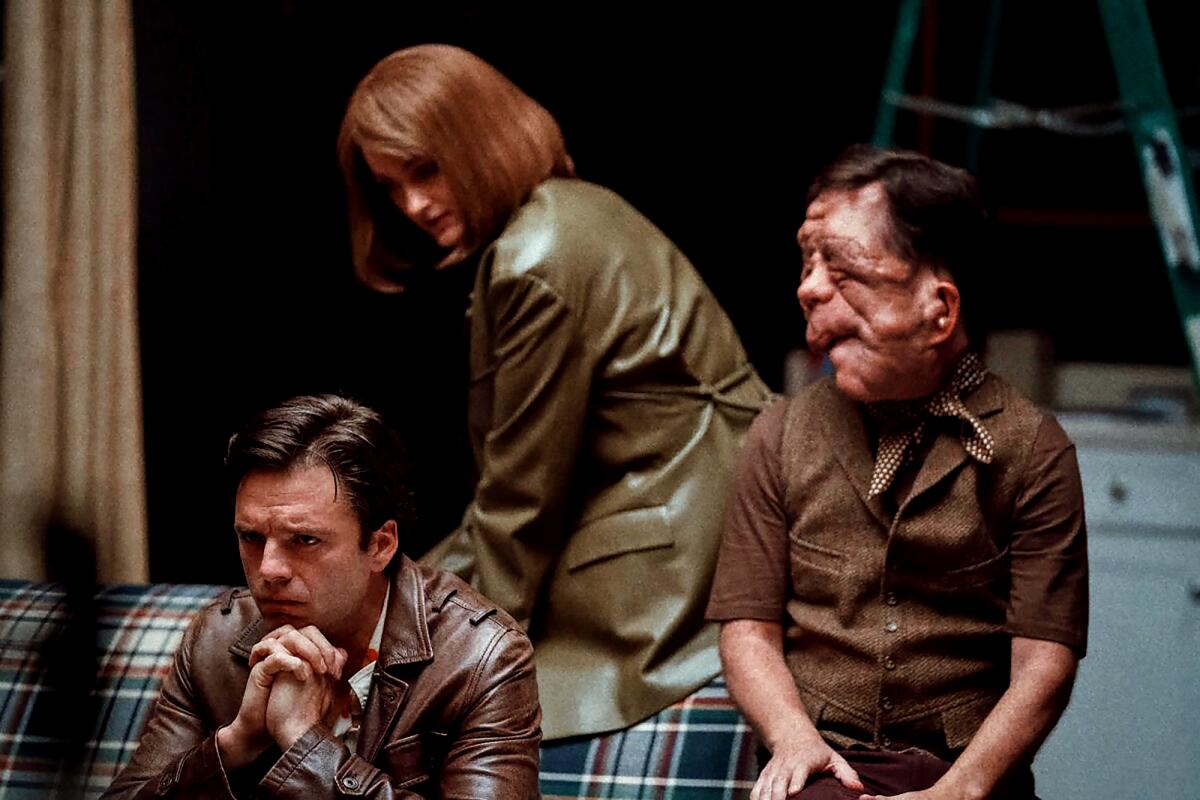
Sebastian Stan, left, Renate Reinsve and Adam Pearson in the movie “A Different Man.”
(Matt Infante / A24)
Josh Rottenberg spoke to Stan, Pearson (who has neurofibromatosis in real life) and Oscar-nominated makeup artist Mike Marino, who also did the prosthetics for Colin Farrell in the new series “The Penguin.”
As for whether Pearson would undergo the procedure imagined by the movie, he said he would not.
“I joke with my friends that my disability does a lot of heavy lifting for my appalling personality,” Pearson said. “Everyone thinks about how hard it is to go from non-disabled to disabled. I think the other way around would be even harder. The path we walk and the struggles we go through make us who we are and they’re inseparable from one another.”
‘The Babadook’ turns 10
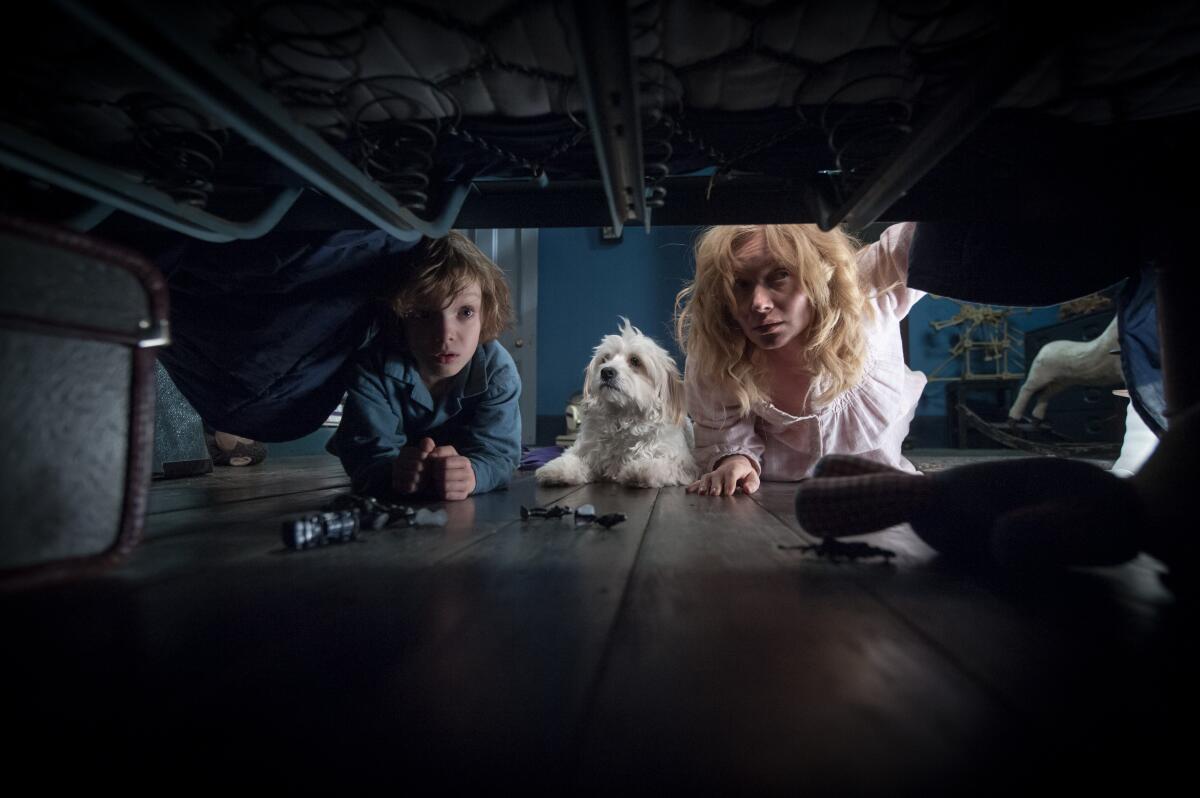
Noah Wiseman and Essie Davis in the movie “The Babadook.”
(Matt Nettheim / IFC Films)
To celebrate the 10th anniversary of Jennifer Kent’s “The Babadook,” which has become a new horror staple, the film is returning to theaters for a limited run. Many screenings include a taped Q&A between Kent and Alfonso Cuarón. Kent will appear in person for a screening at Vidiots on Oct 1.
As critic Noel Murray once wrote of the film, “‘The Babadook’ is an emotional ride all around — a fright-flick that aims to unsettle and not just shock.”
The film revolves around a single mother Amelia (Essie Davis) and her 6-year-old son Samuel (Noah Wiseman). Amelia has never fully recovered from the death of Samuel’s father on the night her son was born, while Samuel has behavioral issues that make him a troublesome child. Then it begins to seem they are being haunted by an odd top-hat-wearing character from a pop-up book they read together one night and Samuel begins to have visions of the creature among them.
Manuel Betancourt spoke to Kent about the film’s long-lasting resonance, including the embrace of the character by the LGBTQ+ community. Kent explained that she wrote the script while in the throes of grief over the death of her father but that it has only grown in meaning since.
“I just wrote this really honestly for myself, from a very real place,” Kent said. “And yes, it’s about grief. But it’s also more about suppression, actually. And what the public is saying is, ‘You can’t get rid of me, guys! I’m here! I’m just going to get bigger and fatter and huger and more menacing if you try and suppress me!’”
Leonard Maltin on Universal rarities
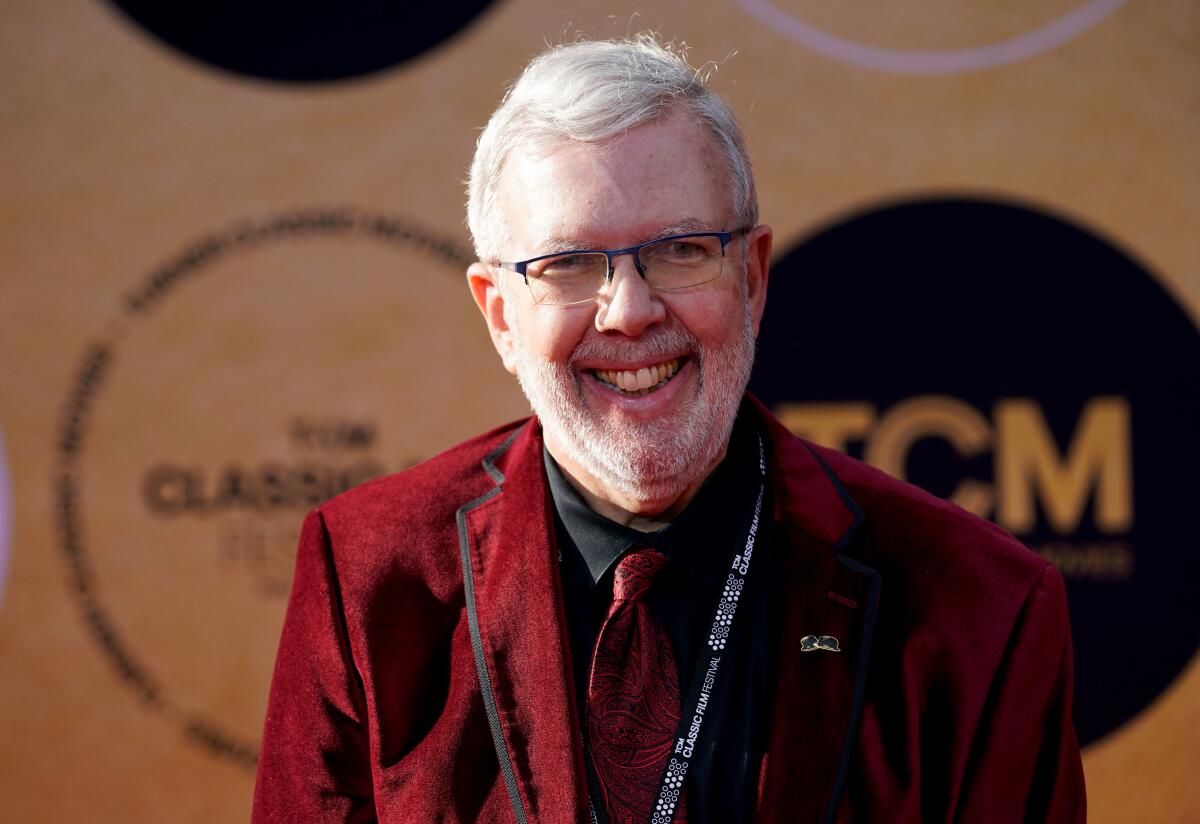
Film critic Leonard Maltin poses at a 40th anniversary screening of the film “E.T. the Extra-Terrestrial” on the opening night of the 2022 TCM Classic Film Festival.
(Chris Pizzello / Invision / AP)
Ever since the Museum of Modern Art presented a series of rarities from the vaults of Universal Studios in 2016, film critic and historian Leonard Maltin has been wanting to bring some of those films to Los Angeles. This weekend at the New Beverly Cinema, Maltin will present six little-seen films from the 1930s, none of which are available on streaming.
In a phone call this week, Maltin explained why he remains curious to seek out new discoveries and is so excited to bring these relative obscurities to local audiences.
“If you see nothing but clinkers, it can discourage you, I’ll admit,” Maltin said. “But if, in sifting through these unknown quantities, you occasionally find a hidden gem, it, it validates the process and inspires further curiosity.”
The program opens with Russell Mack’s 1932 “Once in a Lifetime,” an adaptation of a stage play by George S. Kaufman and Moss Hart that pokes fun at Hollywood. That will be followed by John Francis Dillon’s 1932 “The Cohens and Kellys in Hollywood,” part of a popular series with cameos by stars including Boris Karloff and Tom Mix.
“The Cohens and Kellys in Hollywood” is the one film in the series that even Maltin himself hasn’t seen yet and will be experiencing along with the audience at the New Beverly.
“It may be good, it may be not good, but it’s got to be seen,” he said.
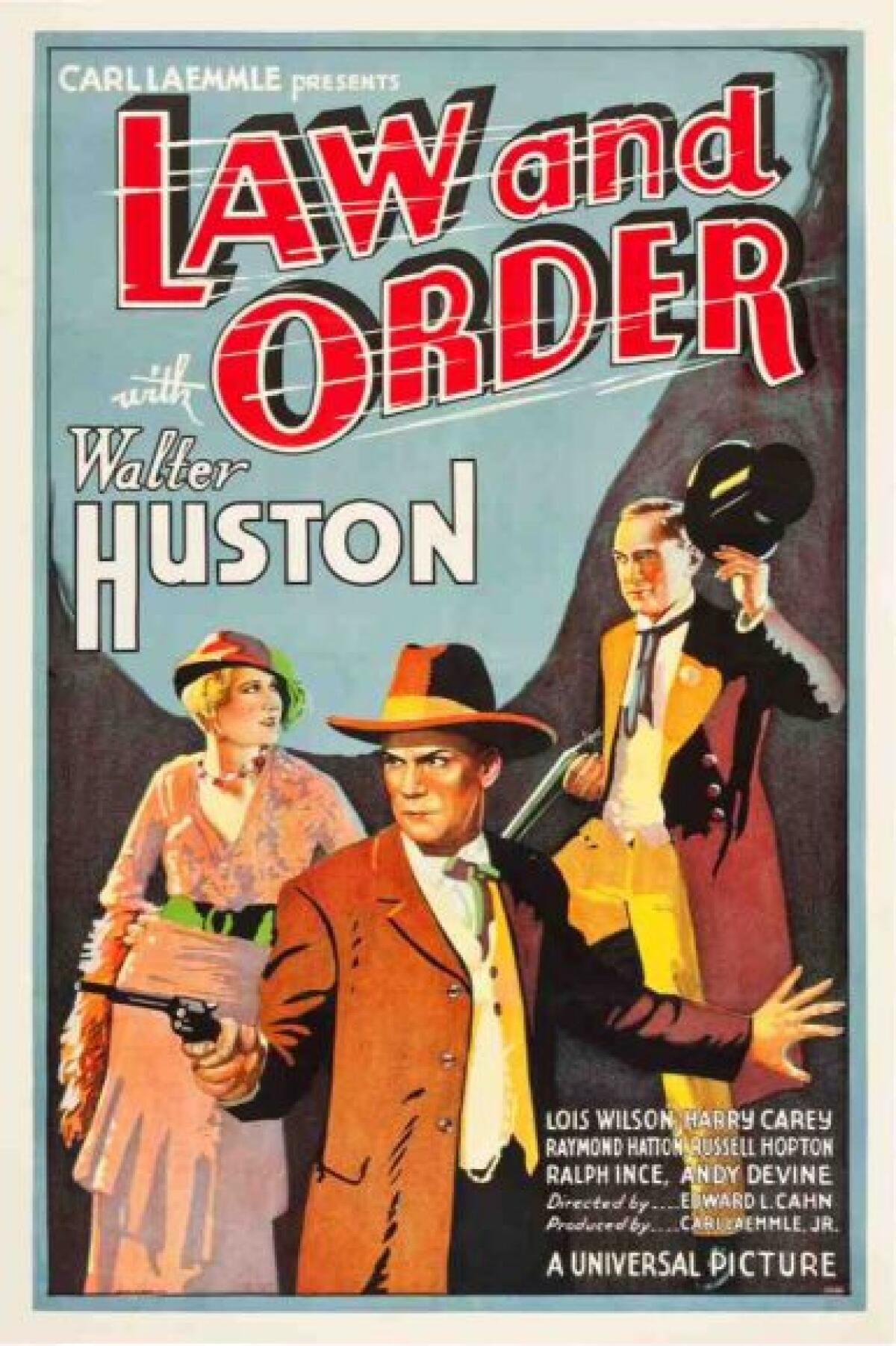
A poster for the 1932 film “Law and Order.”
(Universal Studios)
Edward L. Cahn’s 1932 “Afraid to Talk,” shot by “Metropolis” cinematographer Karl Freund, will be paired with Cahn’s 1932 “Law and Order,” co-written by a young John Huston and starring his father, Walter Huston.
Two films starring Margaret Sullivan, John M. Stahl’s 1933 “Only Yesterday” and William Wyler’s 1935 “The Good Fairy,” will wrap up the series.
As to what draws him to the films of the 1930s, Maltin said: “It’s my favorite decade along with the ’70s. You can’t find a young filmmaker who doesn’t cite the 1970s touchstone period, and with good reason. And yet I find the same in the 1930s. There’s always something of interest, whether it’s the art deco set design or innovative camera work or flirting with matters of good taste or character actors who populated the cast. There’s always something that I find compelling.”
As a longtime chronicler of classic films, Maltin finds the current boom in repertory programming around Los Angeles — with crowds turning up for formats such as nitrate or 70mm and rare titles finally getting a moment in the spotlight — to be extremely invigorating, both for audiences and the ongoing life of film culture.
“I’m thrilled,” Maltin said. “Whoever thought the word nitrate would be a buzzword and a sales tool? It’s rewarding. As a full-time proselytizer for films of this type, I don’t want to say it’s vindication, but it’s a good feeling.”
Points of interest
‘Rhythm Thief’ restored in 4K
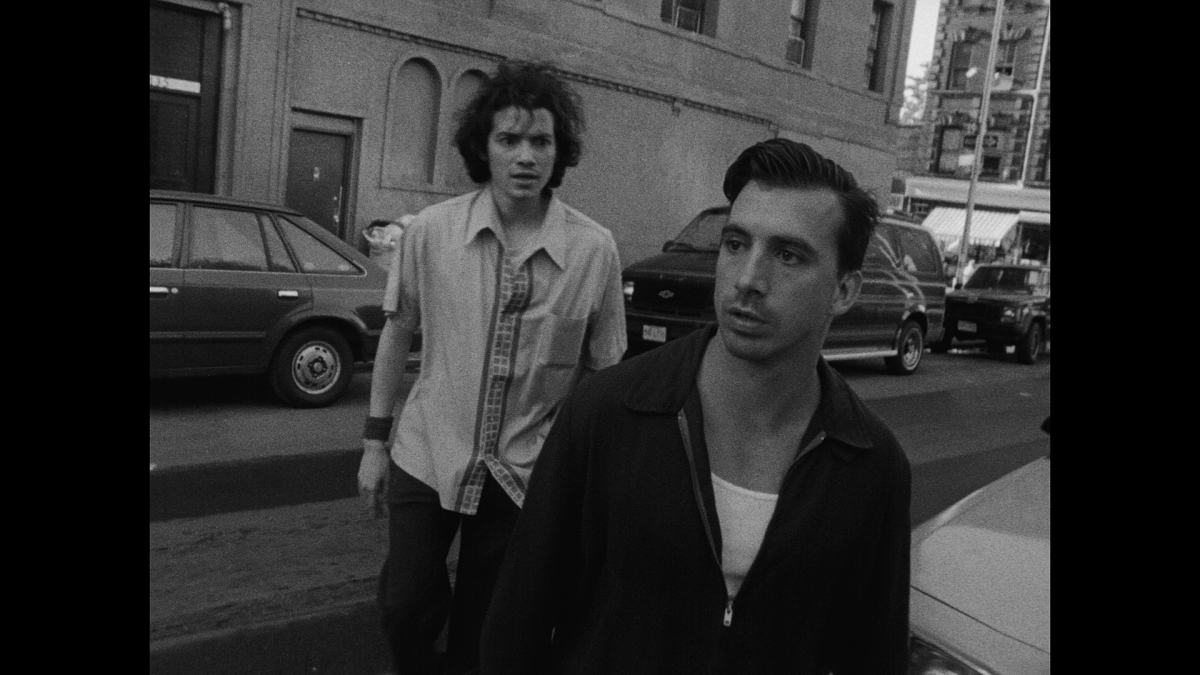
Kevin Corrigan, left, and Jason Andrews in Matthew Harrison’s 1994 “Rhythm Thief.”
(Kino Lorber)
On Wednesday, Mezzanine will host the world premiere of a new 4K restoration of Matthew Harrison’s 1994 “Rhythm Thief” with the director in attendance. Reportedly made for only $11,000, the film captures the energy of New York’s Lower East Side in black-and-white with a jittery feel. Simon, a cassette tape bootlegger — how’s that for period detail! — played by Jason Andrews is struggling to hold his life together when he is visited by a woman from his past (Eddie Daniels) with startling news that sends him on an emotional journey.
No less a film authority than Martin Scorsese praised the film as “inventive, exciting, original.”
In his original review of the film, Kevin Thomas called it “a triumph of economy in all senses,” adding, “Often funny in its sense of absurdity and finally wrenching, ‘Rhythm Thief’ … exudes a sense of life being lived on the edge.”
Haile Gerima’s ‘Black Lions, Roman Wolves: The Children of Adwa’
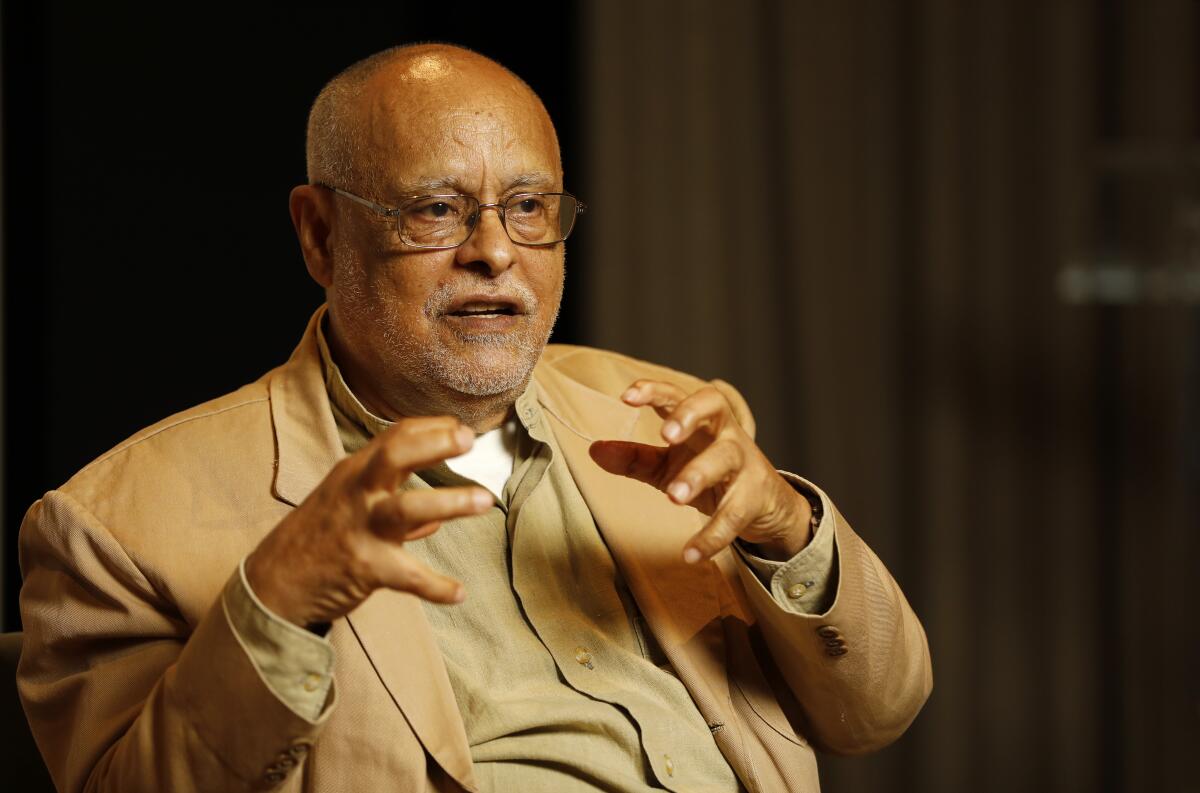
Filmmaker Haile Gerima, photographed on the Array Creative Campus in Los Angeles in September.
(Al Seib / Los Angeles Times)
On Saturday, the American Cinematheque in collaboration with the inaugural KITFO Film Festival dedicated to Ethiopian and Eritrean filmmaking, will present the first episode of Haile Gerima’s 10-hour documentary “Black Lions, Roman Wolves: The Children of Adwa,” chronicling the struggle of Ethiopian patriots during the second Italo-Ethiopian War. The event will feature a Q&A with Gerima, recipient of the Academy’s Vantage Award, and his son Merawi Gerima, the Spirit Award-winning filmmaker who protested the ceremony earlier this year.
‘Purple Noon’ and ‘La Piscine’

Alain Delon in Jacques Deray’s 1969’s “La Piscine.”
(Rialto Pictures / Studiocanal)
As part of a series celebrating French actor Alain Delon, who died in August at age 88, the American Cinematheque will screen two films on Friday that feature him at his most beautiful: René Clément’s 1960 “Purple Noon” and Jacques Deray’s 1969 “La Piscine.”
“Purple Noon” is an adaptation of Patricia Highsmith’s novel “The Talented Mr. Ripley” with Delon starring as the duplicitous murderer Tom Ripley (the same role recently played by Andrew Scott in the series “Ripley.”) When the film was re-released in 1996, Kevin Thomas wrote, “ ‘Purple Noon’ belongs to Delon. … His catlike grace, aura of danger, lonely vulnerability and sexual magnetism make him a most compelling antihero.”
“La Piscine” — which was remade by Luca Guadagnino as “A Bigger Splash” — finds Delon as part of an emotionally entangled Saint-Tropez holiday along with Romy Schneider, Jane Birkin and Maurice Ronet.
As Robert Abele wrote about the film when it was re-released in 2021, “Saint-Tropez holidays don’t get much more erotically photogenic than this movie’s opening moments, in which a perfectly bronzed, buff and blasé Alain Delon and a luminous, fresh-from-the-water Romy Schneider — playing vacationing couple Jean Paul and Marianne — engage in some teasing, merry poolside foreplay. Delon and Schneider had been a real-life item but were friendly enough after separating that he insisted Schneider be cast or he wouldn’t do the film, and the stars’ chemistry readily rivals the wattage from this midday scene’s natural light source.”
